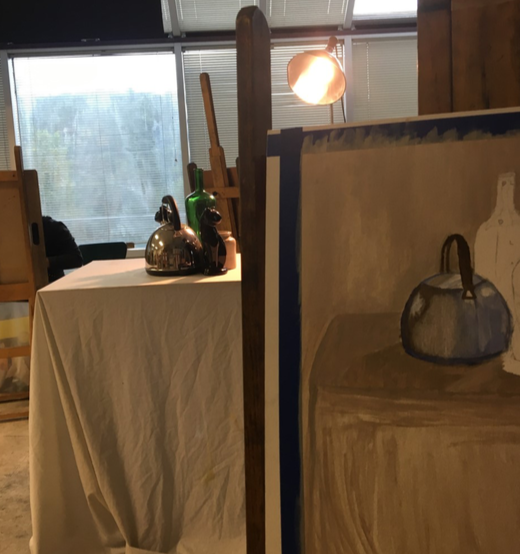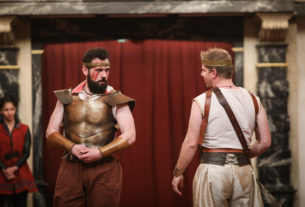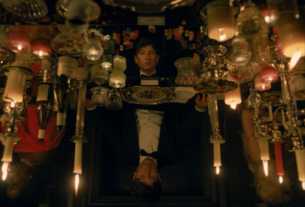
Learning, Composing and Painting: ART 241
PVCC has many classes that go beyond the general education subjects and offer students a chance to learn extraordinary skills. Painting I, or Art 241, is a course worth four credits and is given in Fall, Spring and Summer. Painting I lets people to use their creativity and imagination, while also learning a
new, fascinating hobby. The class is taught by Aaron Miller, Assistant Professor of Graphic Design and knowledgeable artist.
you must know how to draw, assess color and light, assess the qualities of various paints and mediums, mix colors and apply them in a variety of textures and consistencies, choose appropriate materials, supports, media and tools. You must know about design and principles of visual communication, the history of painting and important painters. You must be able to solve
“In Painting I, I do teach the basics: Composition, Observational Tools, Value & Light-Tone relationships, Paint Qualities, Mark-
making, Color Mixing/Theory. However, the ‘excitement in the process’ to me is the most important part. Everyone intuitively understands different parts, and has trouble with other parts. So in my class we spend as much time as possible in front of the canvas, and through individual feedback and critiques I try to help each student figure out what the most important skill to develop is,” said Miller.
Even though the class is considered a lecture, most of the time is spent on painting with the methods shown. Students get in a circle with their paints and canvases to create their own renditions of scenes or still-lives.
Further into the semester, students are given more freedom in assignments and are able to paint self portraits, landscapes, or interesting objects found around the house. Students also get to learn the science behind making new paint colors and using brush strokes to make their art jump off the canvas.
“Painting is a skill that takes time to develop. That is because it is really many skills. To paint
problems, and have good time management. Above all you must paint and develop a feel for the brush and find excitement in the process,” Miller said.
After signing up for Painting I, there is a short list of supplies students should get a few basic tints of paint, nice brushes, and canvasses. Throughout the semester, students will use these tools to make art and practice the professional techniques that are introduced in the course.
“At the end of each semester, I have every student bring in every homework painting from the class, and we do a big final critique. Practicing painting can seem slow and tedious, but seeing three months of work and progress is always great. Each student tends to improve in different areas, and make different discoveries over the semester, but seeing their own progression I hope imparts a confidence and excitement about continuing to paint and improve,” Miller concluded.
There are no requirements before taking Painting I, and the students do not have to be experienced at painting to join. As long as students are willing to learn and use their creativity, anyone can excel in this course and develop a new talent. There is also a Painting II course that helps developing artists improve on their talents.
Once the course is over, students take home their paintings. Painting I meets every Monday from 1-5 p.m. in room 118 at the Dickinson building and lasts 16 weeks.







